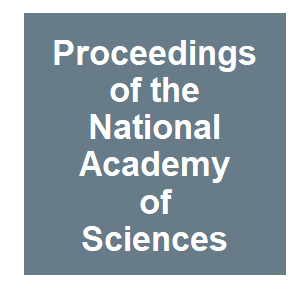
Keywords: y-chromosome

|
Synthetic sex ratio distorters based on CRISPR for the control of harmful insect populationsFasulo, B., Meccariello, A., Papathanos, P. A., and Windbichler, N., AREA-WIDE INTEGRATED PEST MANAGEMENT: Development and Field Application, 2021.
Since the overall reproductive output of a population is typically determined by the fertility of its females, which are rate-limiting in gamete production, a successful way to genetically control a population should involve artificially biasing the sex ratio towards males. In ... Keywords: behavioural landscape ecology, biological control, brook, brook trout, brown, CDMetaPOP, fish, fisheries, genetic biocontrol, landscape connectivity, management, model, modelling, potential eradication, relative fitness, reproductive success, Salvelinus fontinalis, simulation, spatially-explicit, Trojan Y, trout, y-chromosome, YY males |

|
Sequence analysis in Bos taurus reveals pervasiveness of X–Y arms races in mammalian lineagesJ. F. Hughes, H. Skaletsky, T. Pyntikova, N. Koutseva, T. Raudsepp, L. G. Brown, D. W. Bellott, T.-J. Cho, S. Dugan-Rocha, Z. Khan, C. Kremitzki, C. Fronick, T. A. Graves-Lindsay, L. Fulton, W. C. Warren, R. K. Wilson, E. Owens, J. E. Womack, W. J. Murphy, Genome Research, 2020.
Here, we provide evidence that suppression of X–Y crossing-over unleashed a second dynamic: selfish X–Y arms races that reshaped the sex chromosomes in mammals as different as cattle, mice, and men. Using super-resolution sequencing, we explore the Y Chromosome of Bos taurus ... Keywords: behavioural landscape ecology, biological control, brook, brook trout, brown, CDMetaPOP, fish, fisheries, genetic biocontrol, landscape connectivity, management, model, modelling, potential eradication, relative fitness, reproductive success, Salvelinus fontinalis, simulation, spatially-explicit, Trojan Y, trout, y-chromosome, YY males |

|
The bull Y chromosome has evolved to bully its way into gametesWhitehead Institute for Biomedical Research, Phys Org, 2020.
In a new study, published Nov. 18 in the journal Genome Research, scientists in the lab of Whitehead Institute Member David Page present the first ever full, high-resolution sequence of the Y chromosome of a Hereford bull. The research, more than a decade in the making, suggests ... Keywords: behavioural landscape ecology, biological control, brook, brook trout, brown, CDMetaPOP, fish, fisheries, genetic biocontrol, landscape connectivity, management, model, modelling, potential eradication, relative fitness, reproductive success, Salvelinus fontinalis, simulation, spatially-explicit, Trojan Y, trout, y-chromosome, YY males |

|
Nix alone is sufficient to convert female Aedes aegypti into fertile males and myo-sex is needed for male flightA. Aryan, M. A. E. Anderson, J. K. Biedler, Y. M. Qi, J. M. Overcash, A. N. Naumenko, M. V. Sharakhova, C. H. Mao, Z. N. Adelman and Z. J. Tu, Proceedings of the National Academy of Sciences of the United States of America, 117:17702-17709. 2020.
Here, we report the generation of multiple transgenic lines that express Nix under the control of its own promoter. Genetic and molecular analyses of these lines provided insights unattainable from previous transient experiments. We show that the Nix transgene alone, in the ... Keywords: behavioural landscape ecology, biological control, brook, brook trout, brown, CDMetaPOP, fish, fisheries, genetic biocontrol, landscape connectivity, management, model, modelling, potential eradication, relative fitness, reproductive success, Salvelinus fontinalis, simulation, spatially-explicit, Trojan Y, trout, y-chromosome, YY males |

|
The Y Chromosome as a Battleground for Intragenomic ConflictD. Bachtrog, Trends in Genetics, 2020.
Recurrent sex chromosome drive can have profound ecological, evolutionary, and cellular impacts and account for unique features of sex chromosomes. Keywords: behavioural landscape ecology, biological control, brook, brook trout, brown, CDMetaPOP, fish, fisheries, genetic biocontrol, landscape connectivity, management, model, modelling, potential eradication, relative fitness, reproductive success, Salvelinus fontinalis, simulation, spatially-explicit, Trojan Y, trout, y-chromosome, YY males |

|
Simulating effects of fitness and dispersal on the use of Trojan sex chromosomes for the management of invasive speciesC. C. Day, E. L. Landguth, R. K. Simmons, W. P. Baker, A. R. Whiteley, P. M. Lukacs and A. Bearlin, Journal of Applied Ecology, 2020.
The use of Trojan Y chromosomes (TYC) for controlling invasive species involves manipulating the sex chromosomes of captive-raised individuals. Following release, the offspring of these individuals consist of only one sex, thereby skewing the sex ratio of the invasive population ... Keywords: behavioural landscape ecology, biological control, brook, brook trout, brown, CDMetaPOP, fish, fisheries, genetic biocontrol, landscape connectivity, management, model, modelling, potential eradication, relative fitness, reproductive success, Salvelinus fontinalis, simulation, spatially-explicit, Trojan Y, trout, y-chromosome, YY males |

Contact
David O’Brochta
Foundation for the
National Institutes of Health
geneconvenevi@fnih.org
RSS

